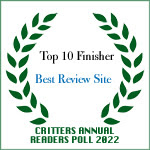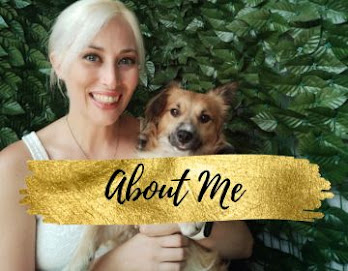SEO for Book Bloggers
How to Improve SEO for Book Reviews
Search Engine Optimization (SEO) plays a huge role in the success of individual blog posts and your blog as a whole. Book blogging is no exception. In this post we'll be looking at ways to make sure your book reviews are SEO friendly.
Google wants to find blog posts that deliver what they promise in their titles. SEO is therefore important to your search engine ranking. In the case of book reviews your keyword focus is probably on the title of the book.
You might also like: The Ultimate Guide for Book Bloggers
Where to insert your keywords
The title of the post
Your title is one of the most important pieces of your SEO game. Make sure it's crystal clear what your blog post is about by inserting the book title of the book you are reviewing in the title of the post.
The permalink
It's a good idea to have the name of the book appear in the permalink for the blog post too.
The body of the post
The more comprehensive, informative, and useful your blog post is the better it should appear in search engine results. Book reviews are no different to other content.
Use headings and sub-heading with your keywords in your book review, and make sure your blog post is optimised for readability. Users don’t always read the entire article. They scan the information to find the interesting bits. Keeping your sentences short, and using fewer sentences per paragraph makes your content easy to scan.
Another way to improve readability is to make sure you have plenty of white space on the page and use a font that is easy on the eyes.
The meta description
The meta description is an HTML meta tag that you can add to any page. It provides a short description of your article for search engines and other crawlers.
The character limit for meta description is 150 so make sure you include your keywords early on in the description.
The post labels/tags
Categories and tags help sort your content not only for yourself, but also for your readers and search engines.
Don't forget to add related keywords too. These might be:
- The author name
- The Publisher
- The genre
- The series name
- Other books by the same author
- Tropes
- Character types
You might also like: Ways To Write More Creative Book Reviews
The images
1. Make sure the images you use are optimised for the web. Images increase your overall load time and take longer to load than plain text. As search engines often rank faster websites higher you need to make sure your images aren't too big. A file size below 70kb is what you should be aiming for.
For more detailed information about Image optimization for SEO check out this article by Search Engine Watch with basic image optimization tips that anyone can apply for any type of site.
2. Alt text is also crucial for image SEO as it helps search engines understand the context of the image. Usually, the alt text is not visible on your website but it accompanies images in Google image search which helps users understand the image and improves your chances of getting more visitors. The more descriptive your alt text the better.
3. Be descriptive with the file names of your images too and make sure you include your keywords e.g. Percy-Jackson-Bookcover.jpeg is better than DSC01234.jpeg
Internal links to related content
Adding internal links in your blog post is a great way to develop a relationship between new and older blog posts. It also allows you to pass link juice to your older posts.
Do you spend time to SEO your book reviews? Got more tips on how to improve SEO for book reviews?
Join the Blog Audit Challenge 2021 for monthly tasks on how you can improve your blog. It's completely free and you can join in at any time throughout the year.





.jpg)
.jpg)








.jpg)


18 comments
Thanks Jo, this is a really helpful piece. I am pretty good at most of these things, but had never thought about the importance of naming images. That's something that I will be bearing in mind going forward.
ReplyDeleteI think a lot of bloggers overlook the name of their images. I've definitely been guilty of it in the past.
DeleteI don't think some people realise how much images not only need to have alt descriptions but the amount of images and the size affect their site. Too many and their sites run slow. Also I find some are difficult to look at when they are too big. Thanks for sharing.
ReplyDeleteVery true. Another good reason to have a responsive website. It never looks good when the image is so big it overflows the blog post.
DeleteDefinitely better to have a couple of smaller images than an oversized one.
This is an excellent resource, I understand these concepts so much better now.
ReplyDeleteThanks DJ. Happy to be of service 😊
DeleteThis is one of the most challenging aspects I face with my blog. I do use keywords (usually the book title and or author name) and have started to add them to alt image and meta description. My problem comes with the headline. Just using the book title and the words review sounds rather dull and I was advised by a blogging expert to try and make them more active/emotional. But if you do that, the headline becomes very long. Any suggestions??
ReplyDeleteWhen it comes to headlines it needs to describe what the post is about. The content needs to match what the title says it delivers. The risk is trying to avoid being full but ending up with a title, that although creative, doesn't work for SEO.
DeleteFor book reviews using the words book review and the title/author of the book works perfectly. It's also industry standard and so expected not frowned upon. To keep things more interesting you can always use a subheading. This is where you can get more creative and put your own personal stamp on it.
Thanks Jo. Good point about needing to avoid over thinking the title. I think I fell into that trap a few times.
DeleteBy sub heading do you mean a heading within the main body of the post?
Subheadings help readers navigate a blog post. In this post for example I used the main heading "SEO for Book Bloggers". I then added the heading "How to Improve SEO for Book Reviews" and later the subheading "Where to insert your keywords. After that I inserted minor headings for each section.
DeleteIn the case of a book review you could have subheadings like "Why you should read this book" or "Reasons this book was a page- turner" or "My favourite quotes from the book".
Sorry it's taken me so long to reply. I'm trying out some of these tips for my older posts to give them a boost...
DeleteUseful post! I need to get on the meta description. I always skip that.
ReplyDeleteThanks Kate. Meta description plays a huge role in the SEO of blog posts. It's also the text that shows up along with the headline and link in search results. It's how you get people to click your post over all the others in the search results.
Deletei am pinning this for future reference!!! needed post
ReplyDeleteGreat! I'm glad you found it useful. A lot of book bloggers don't consider SEO when posting their book reviews, but it makes a huge difference.
DeleteThanks for this post. I never realised the importance of naming images.
ReplyDeleteNaming images is one of those things that often gets overlooked by bloggers.
DeleteThis is a great post with a whole lot of useful tips! I'm finding it hard to use SEO, so this is great :) Thanks
ReplyDelete